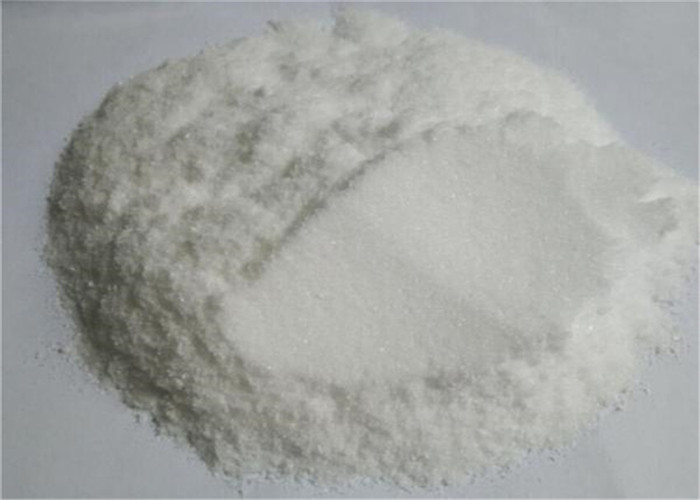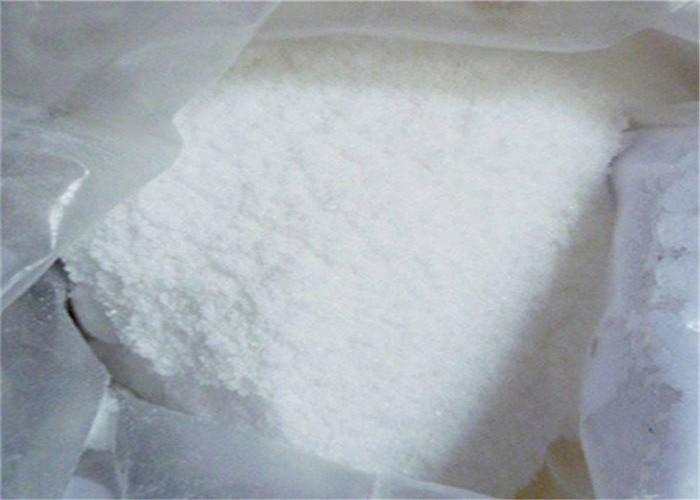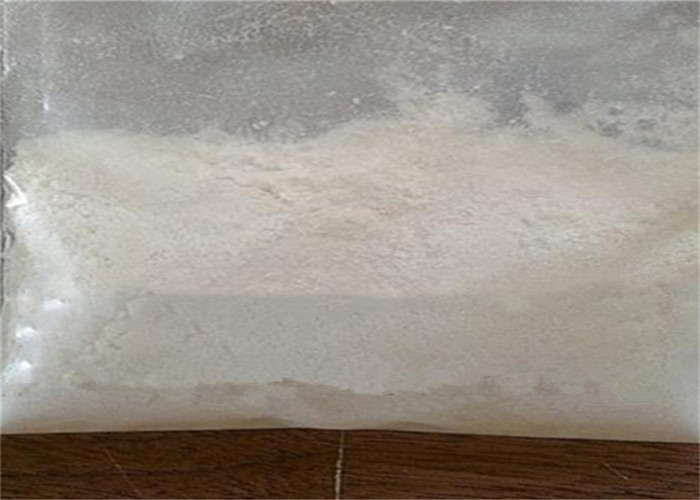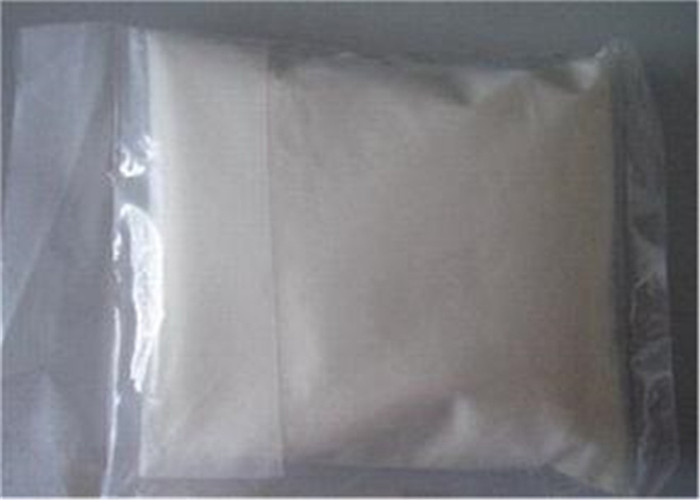99.5% Top Grade Pharmaceutical Intermediate Dapagliflozin Powder CAS: 461432-26
Superiority
Zhongshan Latterson Biotechnology Co., Ltd., is a comprehensive pharmaceutical enterprise, which specialized in bio-pharmaceutical technology over 7 years. The company is located in Zhongshan City, Guangdong Province , China.
Our factory covers an area of 33500 square meters, with clean environment and nice layout. There are several large or medium workshops and QA and research center with advanced equipment. At present, our main products are Anabolic Steroid series, Peptide series, Local Anesthetic series. Our products reach the advanced standard of domestic market, many of which reach the international standard, certificates contain: KOSHER , ISO 9001:2008 , GMP , SGS.
Basic Details:
Product Name: Dapagliflozin
Synonyms: DAPAGLIFLOZIN;(1S)-1,5-Anhydro-1-C-[4-chloro-3-[(4-ethoxyphenyl)methyl]phenyl]-D-glucitol;2-(3-(4-Ethoxybenzyl)-4-chlorophenyl)-6-hydroxymethyltetrahydro-2H-pyran-3,4,5-triol;Bms 512148;D-Glucitol, 1,5-anhydro-1-C-(4-chloro-3-((4-ethoxyphenyl)methyl)phenyl)-, (1S)-;Dapagliflozin(BMS-512148);(2S,4R,5R)-2-(4-chloro-3-(4-ethoxybenzyl)phenyl)-6-(hydroxyMethyl)tetrahydro-2H-pyran-3,4,5-triol;1-[4-Chloro-3-(4-ethoxybenzyl)phenyl]-1-deoxy-beta-D-glucopyranose (1S)-1,5-Anhydro-1-C-[4-chloro-3-(4-ethoxybenzyl)phenyl]-D-glucitol (2S,3R,4R,5S,6R)-2-[4-Chloro-3-(4-ethoxybenzyl)phenyl]-6-(hydroxyMethyl)tetrahydro-2H-pyran-3,4,5-triol
CAS: 461432-26-8
MF: C21H25ClO6
MW: 408.875
EINECS: 1592732-453-0
density: 1.349
appearance: White Solid
The COA of this product :
| ITEMS |
SPECIFICATION |
TESTRESULTS |
| Appearance |
Off-white or white powder |
Conforms |
| Identification |
HPLC,NMR;LC-MS |
Conforms |
| Related substances |
Individual impurity≤0.5% |
0.09% |
| Total impurities≤1.0% |
0.20% |
| Loss on drying |
≤0.5% |
0.3% |
| Residue on ignition |
≤0.1% |
0.04% |
| Heavy metals |
≤10ppm |
Conforms |
| Assay |
≥98.0 % |
99.5% |
Description:
Dapagliflozin (ForxigaTM) is a new antidiabetic drug jointly developed by Bristol-Myers Squibb and AstraZeneca, being approved by the European Medicines Agency (EMA) on November 12, 2012. It is also the first approved SGLT2 inhibitor for the treatment of type II diabetes, being an important option in the treatment of diabetes, and is used to improve glycemic control as an adjunct to dietary and exercise for adults with type II diabetes. Dapagliflozin is a sodium-glucose co-transporter 2 inhibitor. On January 8, 2014, the US Food and Drug Administration (FDA) have approved it for being used in the treatment of type II diabetes. Meanwhile, FDA requires the producers to conduct post-marketing research on drug-related risks. The post-marketing trial requested by the FDA includes a cardiovascular outcome trial for assessing the cardiovascular risk for high-risk patients after treatment with dapagliflozin at baseline and a study to assess the risk of bladder cancer in recruited patients. Another study will assess the bladder tumor-promoting effect of this drug on rodent animals. Two studies will assess the pharmacokinetics, efficacy and safety of dapagliflozin in pediatric patients; a set of strengthened pharmacovigilance program will monitor liver abnormalities and pregnancy outcome reports in patients receiving daglitazone. Dapagliflozin will be marketed under the tradename Farxiga by Haoeyou Pharmacy. Pharmacological effects Dapagliflozin works through inhibiting sodium-glucose transporter 2 (SGLT2), a protein in the kidney that reabsorbs glucose into the bloodstream. This allows extra glucose to be excreted through the urine, improving glycemic control without increasing insulin secretion. The use of this drug requires patients with normal renal function while patients of moderate to severe renal insufficiency should be disabled to use this drug. Single application of this product or combination with metformin, pioglitazone, glimepiride, insulin and other drugs can significantly reduce the HbA1c and fasting blood glucose of patients suffering type II diabetes. The frequency of the adverse reaction was similar to placebo with low risk of hypoglycemia, being able to reduce body weight.
The efficacy of dapagliflozin is comparable with the dipeptidyl peptidase inhibitors, and several new hypoglycemic drugs, and can also mildly lower the blood pressure and body weight. The drug has 5mg and 10mg two tablets to choose from, can be either used alone or together with insulin, including other diabetes drugs. Pharmacokinetics In healthy subjects, dapagliflozin was rapidly absorbed after oral administration with a peak time Tmax being 1 to 2 hours, a protein binding rate of 91%, an oral bioavailability of about 78% and a plasma terminal half-life of 12.9 hours. After oral administration, the drug is mainly metabolized by the uridine diphosphate glucuronosyltransferase 1A9 (UGT1A9) into the inactive metabolite in the liver with the smaller part being metabolized by the P450 enzyme and of no inhibitory or inducing effect on the P450 enzyme. Drug prototypes and related metabolites were excreted through urine (75%) and faeces (21%). Compare simultaneous administration of this product with high-fat food and with the fasting administration, Tmax can be extended by 1-fold, but the absorption did not affect the degree, so can be administrated together with the food.The pharmacokinetics of daglitazone was significantly affected by renal function. Diabetic patients with mild, moderate or severe renal insufficiency are merged to be subject to oral administration of 20 mg • d-1 daglitazone for 7 days. The mean systemic exposure amount, compared with patients with normal renal function, is respectively 32%, 60% and 87% higher. For patients with normal renal function, mild insufficiency, moderate insufficiency and severe insufficiency, the urinary glucose excretion amount in 24 hours of steady state was 85, 52, 18 and 11g, successively. Kasichayanula et al have studied the pharmacokinetic effects of liver dysfunction on daglitazone. The patients with mild, moderate and severe hepatic insufficiency having a single oral dose of 10 mg of daglitazone, the Cmax of each group was 12% lower, 12% higher and 40% higher than that with normal liver function, respectively. The AUC of each group was significantly higher than that of normal liver function by 3%, 36% and 67%. Therefore, it is not recommended to apply daglitazone to patients of moderate and severe renal dysfunction. Severe liver dysfunction patients need to reduce the use of dose.Synthesis method 5-bromo-2-chlorobenzoic acid is subject to acylating chlorination, and has Friedel-Crafts reaction with phenylethyl ether for reduction of its carbonyl group, generating 5-bromo-2-chloro-4′-ethoxydiphenyl methane, further subjecting to condensation with 2, 3, 4, 6-tetra-O-trimethylsilyl-D-glucopyranosanoic acid-1,5-lactone. The anomeric carbon hydroxyl group is subject to etherification and deprotection to give 2-chloro-5-(1-methoxy-D-glucopyranose-I-yl)-4′-ethoxydiphenylmethane, and then use Et3SiH/BF3 • OEt2 for reduction to remove methoxy, followed by acetic anhydride esterification and hydrolysis to give hypoglycemic agents daglitazone with the overall yield of about 40%.the chemical reaction route of synthesizing dapagliflozin
Fig.1 shows the chemical reaction route of synthesizing dapagliflozin.
Safety Daglitazone has excellent tolerance and safety with the incidence of adverse events associated with 10 mg • d-1 daglitazone being similar to that of placebo. Common adverse events included hypoglycemia, polyuria, back pain, genital infections, urinary tract infections, dyslipidemia and hematocrit (HCT) increase. The overall risk of hypoglycemia is low, and the incidence of hypoglycemia is associated with other basic hypoglycemic agents. The incidence of hypoglycemia was higher in patients subjecting to joint treatment between daglitazone and sulfonylureas or insulin compared with placebo. Therefore, when this product is used in combination with insulin or insulin secretagogue, you may need to adjust the dose of the latter one.
Drug interactions This product is mainly metabolized in the liver by UGT1A9 metabolism, being the P-glycoprotein substrate. Study confirmed that the pharmacokinetics of daglitazone was not affected by metformin, pioglitazone, sitagliptin, glimepiride, voglibose, and simvastatin, valsartan, warfarin, and digoxin. The serum concentrations of the above-mentioned drugs are also not clinically significantly affected by daglitazone. Rifampicin can reduce the exposure amount of daglitazone by 22% while mefenamic acid can increase the body exposure amount by 51%, but have no clinically significant effect on 24 h urine glucose excretion.
Uses:
1. therapeutic for diabetes I or II, and hyperglycemia
2. A sodium-glucose transporter 2 inhibitor
Diabetes drugs:
Dapagliflozin (ForxigaTM) is a new antidiabetic drug jointly developed by Bristol-Myers Squibb and AstraZeneca, being approved by the European Medicines Agency (EMA) on November 12, 2012. It is also the first approved SGLT2 inhibitor for the treatment of type II diabetes, being an important option in the treatment of diabetes, and is used to improve glycemic control as an adjunct to dietary and exercise for adults with type II diabetes.
Dapagliflozin is a sodium-glucose co-transporter 2 inhibitor. On January 8, 2014, the US Food and Drug Administration (FDA) have approved it for being used in the treatment of type II diabetes. Meanwhile, FDA requires the producers to conduct post-marketing research on drug-related risks.
The post-marketing trial requested by the FDA includes a cardiovascular outcome trial for assessing the cardiovascular risk for high-risk patients after treatment with dapagliflozin at baseline and a study to assess the risk of bladder cancer in recruited patients. Another study will assess the bladder tumor-promoting effect of this drug on rodent animals. Two studies will assess the pharmacokinetics, efficacy and safety of dapagliflozin in pediatric patients; a set of strengthened pharmacovigilance program will monitor liver abnormalities and pregnancy outcome reports in patients receiving daglitazone.
Pharmacological effects
Dapagliflozin works through inhibiting sodium-glucose transporter 2 (SGLT2), a protein in the kidney that reabsorbs glucose into the bloodstream. This allows extra glucose to be excreted through the urine, improving glycemic control without increasing insulin secretion. The use of this drug requires patients with normal renal function while patients of moderate to severe renal insufficiency should be disabled to use this drug. Single application of this product or combination with metformin, pioglitazone, glimepiride, insulin and other drugs can significantly reduce the HbA1c and fasting blood glucose of patients suffering type II diabetes. The frequency of the adverse reaction was similar to placebo with low risk of hypoglycemia, being able to reduce body weight.The efficacy of dapagliflozin is comparable with the dipeptidyl peptidase inhibitors, and several new hypoglycemic drugs, and can also mildly lower the blood pressure and body weight. The drug has 5mg and 10mg two tablets to choose from, can be either used alone or together with insulin, including other diabetes drugs.
Pharmacokinetics:
In healthy subjects, dapagliflozin was rapidly absorbed after oral administration with a peak time Tmax being 1 to 2 hours, a protein binding rate of 91%, an oral bioavailability of about 78% and a plasma terminal half-life of 12.9 hours. After oral administration, the drug is mainly metabolized by the uridine diphosphate glucuronosyltransferase 1A9 (UGT1A9) into the inactive metabolite in the liver with the smaller part being metabolized by the P450 enzyme and of no inhibitory or inducing effect on the P450 enzyme. Drug prototypes and related metabolites were excreted through urine (75%) and faeces (21%). Compare simultaneous administration of this product with high-fat food and with the fasting administration, Tmax can be extended by 1-fold, but the absorption did not affect the degree, so can be administrated together with the food.
The pharmacokinetics of daglitazone was significantly affected by renal function. Diabetic patients with mild, moderate or severe renal insufficiency are merged to be subject to oral administration of 20 mg • d-1 daglitazone for 7 days. The mean systemic exposure amount, compared with patients with normal renal function, is respectively 32%, 60% and 87% higher. For patients with normal renal function, mild insufficiency, moderate insufficiency and severe insufficiency, the urinary glucose excretion amount in 24 hours of steady state was 85, 52, 18 and 11g, successively.
Kasichayanula et al have studied the pharmacokinetic effects of liver dysfunction on daglitazone. The patients with mild, moderate and severe hepatic insufficiency having a single oral dose of 10 mg of daglitazone, the Cmax of each group was 12% lower, 12% higher and 40% higher than that with normal liver function, respectively. The AUC of each group was significantly higher than that of normal liver function by 3%, 36% and 67%.
Therefore, it is not recommended to apply daglitazone to patients of moderate and severe renal dysfunction. Severe liver dysfunction patients need to reduce the use of dose.
Synthesis method:
5-bromo-2-chlorobenzoic acid is subject to acylating chlorination, and has Friedel-Crafts reaction with phenylethyl ether for reduction of its carbonyl group, generating 5-bromo-2-chloro-4′-ethoxydiphenyl methane, further subjecting to condensation with 2, 3, 4, 6-tetra-O-trimethylsilyl-D-glucopyranosanoic acid-1,5-lactone. The anomeric carbon hydroxyl group is subject to etherification and deprotection to give 2-chloro-5-(1-methoxy-D-glucopyranose-I-yl)-4′-ethoxydiphenylmethane, and then use Et3SiH/BF3 • OEt2 for reduction to remove methoxy, followed by acetic anhydride esterification and hydrolysis to give hypoglycemic agents daglitazone with the overall yield of about 40%.
Our service
1.100% reshipment policy is our business basic.100% reshipment immediately if your parcel stays Customs for 4 days and doesn’t get updated.
2.Total refund for 15 days of dissatisfaction with quality.
3.We can provide free samples.
4.We have a special packing ,It can be easily passed through the customs.It will be more safe.
5.Our company have a long term cooperate with DHL.EMS.Fedex and so on .It can be sent to your hand more quickly. Parcel photo should be offered within 12hours after receiving your steroid payment.
6.If you have a chance to come to China. I can show you our lab.
7.Our company has WU, MG, TT, and Bitcoin payment ways in advance.You can pay 95% for the peptides cost at first for order, the rest can offer us in your next order;
| Sex Enhancement (Raw Powder) |
| Sildenafil Citrate (Viagra) |
| Tadalafil (Cialis) |
| Dapoxetine |
| Dapoxetine HCL |
| Vardenafil |
| Vardenafil HCL |
| Yohimbine HCL |
| Avanafil |
| Flibanserin |
|
|
| Local Anesthetic (Raw Powder) |
| Benzocaine |
| Benzocaine HCL |
| Bupivacaine HCL |
| Bupivacaine |
| Lidocaine |
| Lidocaine HCL |
| Pramoxine HCL |
| Prilocaine |
| Prilocaine HCL / Propitocaine HCL |
| Procaine |
| Procaine HCL(Novocain / Novocaine) |
| Procainamide hydrochloride |
| Ropivacaine HCL |
| Tetracaine |
| Tetracaine HCL |
| Mepivacaine |
| Mepivacaine hydrochloride |
| Trimecaine Hydrochloride |
| Dibucaine |
| Ropivacaine mesylate |
| Cinchocaine Hcl |
| Levobupivacaine |
| Ropivacaine hydrochloride |
| Dimethocaine Hydrochloride |
| Proparacaine hydrochloride |
| Dimethocaine Hydrochloride |
| Fat Burning(raw powder) |
| T3 (Liothyronine Sodium) |
| T4 (L-Thyroxine / L-Thyroxine Sodium salt) |
| L-Carnitine |
| Theobromine |
| Synephrine |
| Synephrine HCL |
| Rimonabant |
| Lorcaserin HCl |
| CLA (Conjugated Linoleic Acid) |
| Orlistat |
| Calcium Pyruvate |
| DMAA (1,3-Dimethylpentylamine HCL) |
| L-Citrulline |
|
| Other Hot-Sale Products (Raw Powder) |
| TUDCA (Tauroursodeoxycholic Acid) |
| GBL (Y-Butyrolactone) |
| 1,4-Butanediol |
| Minoxidil |
| Melatonine |
| Tretinoin |
| Sunifiram |
| Pregabalin |
| Phenacetin |
| Paracetamol |
| Levamisole HCL |
| Pirfenidone |
| Epinephrine HCL |
| Pregnenolone |
| Dextromethorphan hydrobromide monohydrate |
| Argireline |
| SNAP-8 1mg/vial |
| Theophylline |
| Diclofenac Sodium |
| Tianeptine sodium salt |
| Noopept |
| Beta-Nicotinamide Mononucleotide |
| Clobetasol Propionate |
| polyethylene glycol(PEG) |
| Ketoprofen |
| 1,3-Dimethylbutylamine hydrochloride |
| Polyvinylpyrrolidone |
| Baricitinib |
| Diprophylline |
| Aminophylline |
| Tianeptine |
| Tianeptine Sulfate Sulphate |













 Sales Manager
Sales Manager